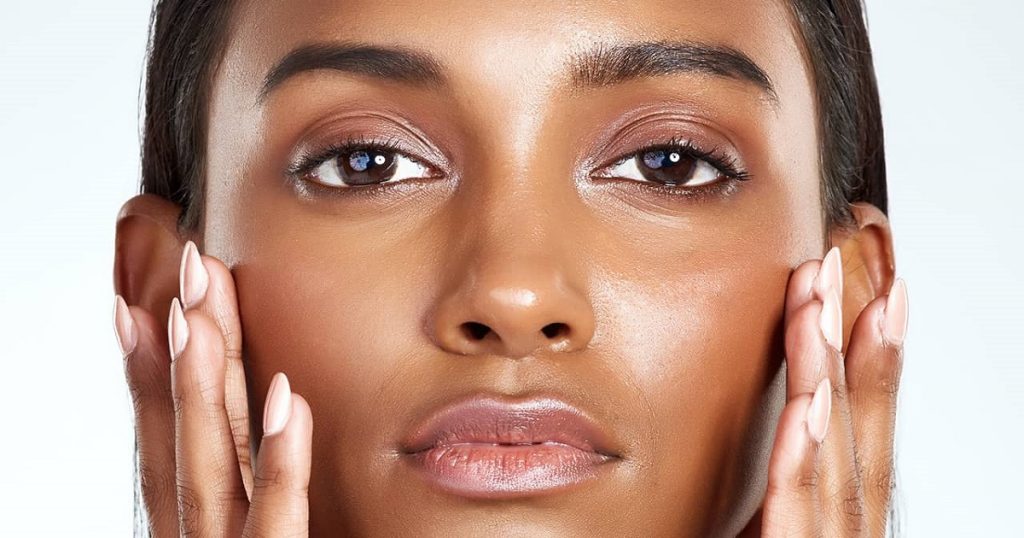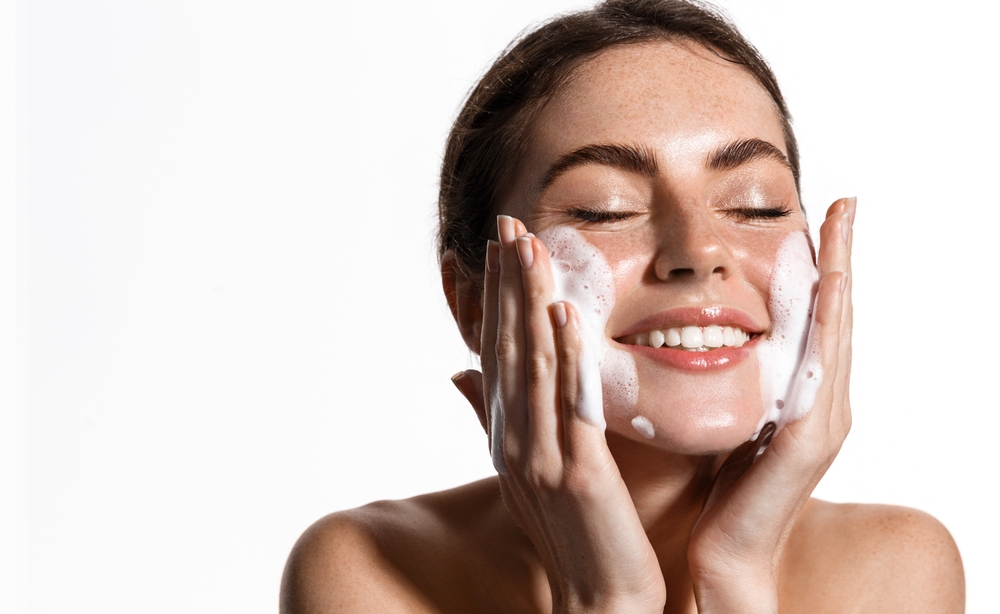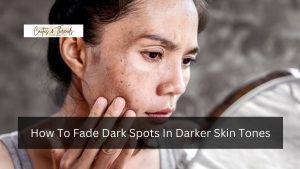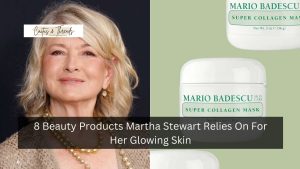
Creating an effective skincare routine tailored to your skin type can help you achieve a healthier, more radiant complexion. With so many products available, building the perfect regimen might feel overwhelming, but this guide will simplify it, helping you establish a routine that works for your unique needs.
Here’s how to create the best skincare routine step by step.
1. Identify Your Skin Type
Before choosing products, it’s essential to know your skin type. The four main types are:
- Oily: Characterized by a shiny appearance, larger pores, and frequent breakouts.

- Dry: Typically has a rough, flaky texture and can feel tight or itchy.
- Combination: Oily in certain areas (usually the T-zone) and dry in others.
- Sensitive: Easily irritated and prone to redness, particularly when exposed to certain products or environmental changes.
Each skin type requires specific care, so understanding yours will guide you in selecting the right products.
2. The Basic Steps of a Skincare Routine
A solid skincare routine doesn’t need to be complicated. Here are the three fundamental steps every routine should include:
- Cleanse – Removes dirt, oil, and makeup, preparing the skin for other products.
- Moisturize – Hydrates the skin, sealing in moisture and enhancing its elasticity.
- Sunscreen – Protects against harmful UV rays, preventing sun damage and premature aging.
These three steps form the foundation of your skincare regimen. Additional products can be added for targeted concerns like acne or aging, but a basic routine is vital for all skin types.
3. Cleansing: The First Step to Clear Skin

Using a gentle cleanser is crucial to remove impurities without stripping the skin’s natural oils. Here’s how to choose based on skin type:
- For Oily Skin: Look for gel-based or foaming cleansers with salicylic acid to help control excess oil.
- For Dry Skin: Opt for cream-based cleansers with hydrating ingredients like hyaluronic acid or glycerin.
- For Combination Skin: Choose a gentle cleanser that balances both hydration and oil control.
- For Sensitive Skin: A fragrance-free, non-foaming cleanser with calming ingredients like chamomile is ideal.
Cleansing in the morning removes overnight oil buildup, while evening cleansing clears away makeup and impurities collected throughout the day.
4. Moisturizing: Essential for All Skin Types
Moisturizing helps keep the skin hydrated, enhances its barrier function, and prevents water loss. The type of moisturizer you choose should complement your skin type:
- Oily Skin: Lightweight, oil-free, or gel-based moisturizers provide hydration without clogging pores.
- Dry Skin: Rich, creamy moisturizers with emollients like ceramides help lock in moisture.
- Combination Skin: A lighter moisturizer on the T-zone and a richer formula for drier areas can balance this skin type.
- Sensitive Skin: Fragrance-free and hypoallergenic moisturizers with soothing ingredients like aloe vera reduce irritation.
Moisturizers can be applied both in the morning and evening, though for drier skin, using a thicker cream at night can boost hydration.
5. Sun Protection: Your Best Defense Against Aging
One of the most crucial steps in any skincare routine is applying sunscreen. Regular sunscreen use reduces the risk of skin cancer and slows down aging signs like wrinkles and dark spots. Dermatologists recommend using broad-spectrum sunscreen with at least SPF 30 every day.

For oily or acne-prone skin, look for oil-free, non-comedogenic formulas. If you have dry skin, a hydrating sunscreen containing ingredients like glycerin or hyaluronic acid can provide additional moisture.
6. Additional Steps for a Customized Routine
Depending on your skin concerns, you might consider adding the following steps to enhance your routine:
- Exfoliating (2-3 times per week): Exfoliation removes dead skin cells, unclogs pores, and promotes cell turnover. Chemical exfoliants like AHAs (alpha hydroxy acids) and BHAs (beta hydroxy acids) are effective for most skin types. For sensitive skin, use a gentler exfoliant or exfoliate less frequently.
- Toning: A toner restores the skin’s pH balance, tightens pores, and removes remaining impurities post-cleansing. Choose a hydrating toner if you have dry skin, or an astringent toner with salicylic acid for oily skin.
- Serums: Serums are concentrated formulas designed to target specific issues like aging, dark spots, or dullness. Vitamin C serums brighten the skin, hyaluronic acid serums hydrate, and retinol serums address fine lines and wrinkles.
7. Night Routine Essentials: Repair and Rejuvenate
Nighttime is when the skin repairs itself, so nighttime skincare routines may differ slightly from the morning. Here’s a recommended approach:
- Night Cream: Often richer than daytime moisturizers, night creams provide extra hydration to help the skin recover overnight.
- Retinoids: If your primary concern is anti-aging or acne, adding a retinoid (a vitamin A derivative) can help. Retinoids boost collagen production and accelerate cell turnover. However, they can be irritating, so start with a low concentration and use them sparingly.
8. Adjusting Your Routine by Season
Your skin’s needs may vary based on the season. In summer, a lighter moisturizer may be all you need, while winter often calls for richer creams to combat dryness caused by cold weather. Adjusting your routine seasonally ensures your skin remains balanced and healthy year-round.
9. Listen to Your Skin
Pay attention to how your skin responds to each product. If you notice redness, irritation, or increased breakouts, discontinue use and try a gentler alternative.
Skincare is about finding what works for you, and sometimes less is more. Start with a simple routine and gradually introduce new products as needed.
10. Sample Skincare Routine for Each Skin Type
For a basic routine, here’s a sample regimen you might follow depending on your skin type:
- Oily Skin: Gel cleanser, toner with salicylic acid, lightweight moisturizer, and oil-free sunscreen in the morning.
- Dry Skin: Cream cleanser, hydrating toner, rich moisturizer, and a hydrating sunscreen.
- Combination Skin: Gentle cleanser, hydrating or balancing toner, lighter moisturizer on oily areas, and richer cream for drier zones.
- Sensitive Skin: Fragrance-free, gentle cleanser, calming toner (optional), soothing moisturizer, and mineral-based sunscreen.
Conclusion:
Creating the best skincare routine doesn’t have to be complicated. Start with the basics—cleanse, moisturize, and protect with sunscreen. From there, customize your routine based on your specific needs and preferences, adding products gradually and adjusting with the seasons.
By consistently following a personalized skincare regimen, you’ll be on your way to healthy, glowing skin that reflects your unique beauty.
READ ALSO:







